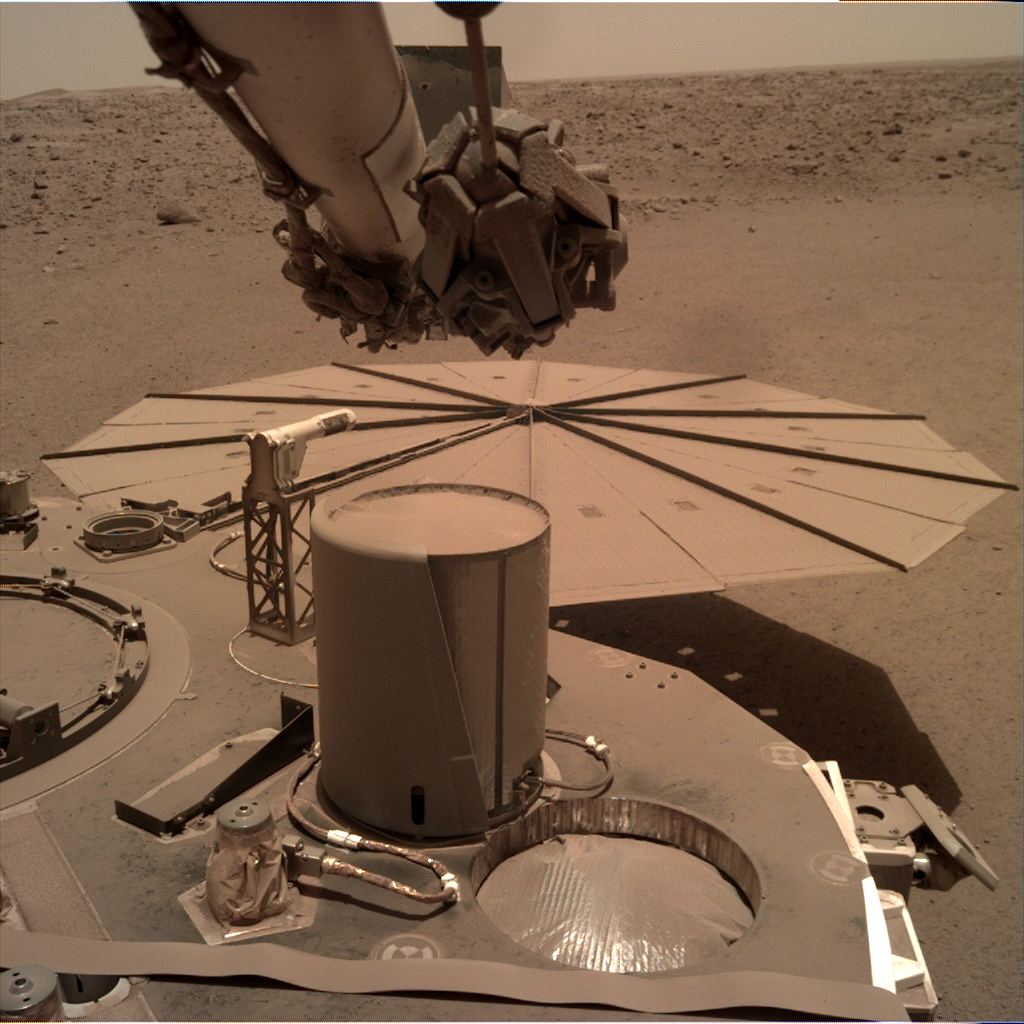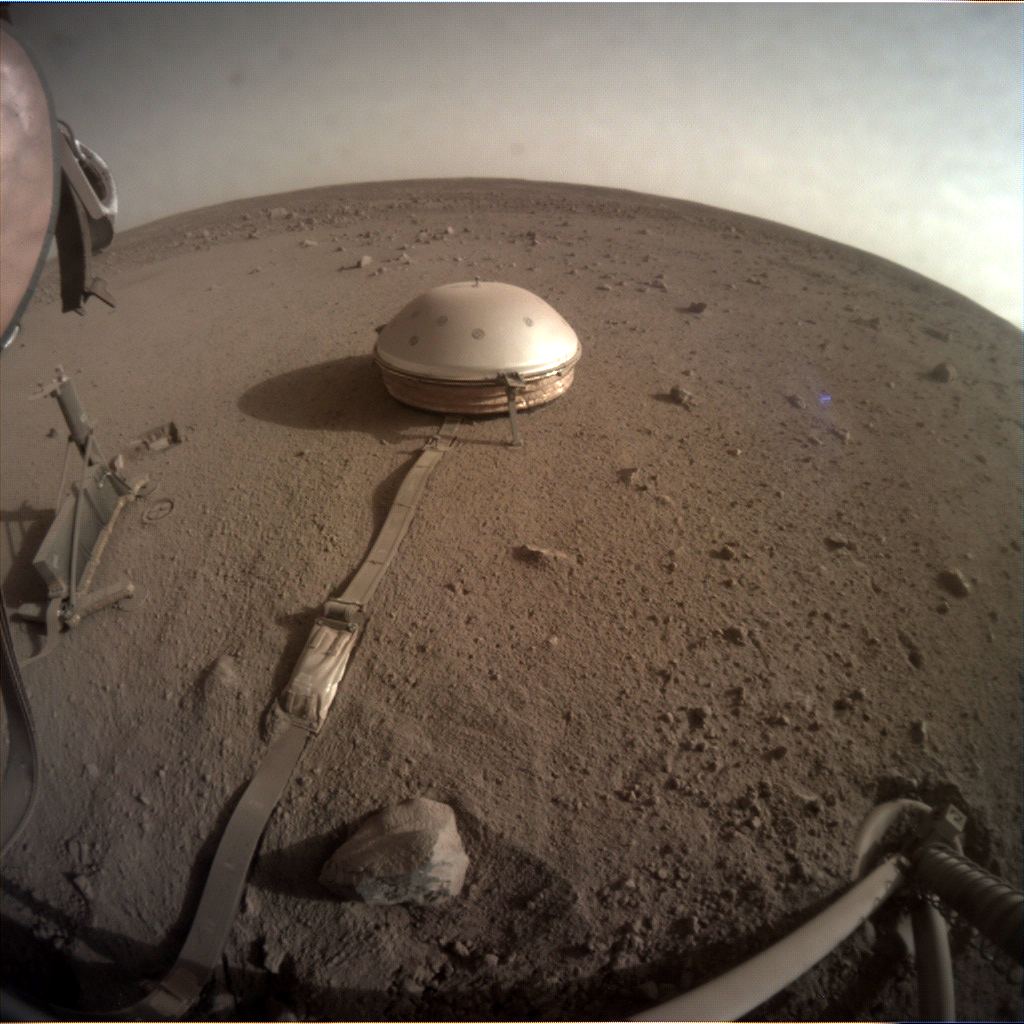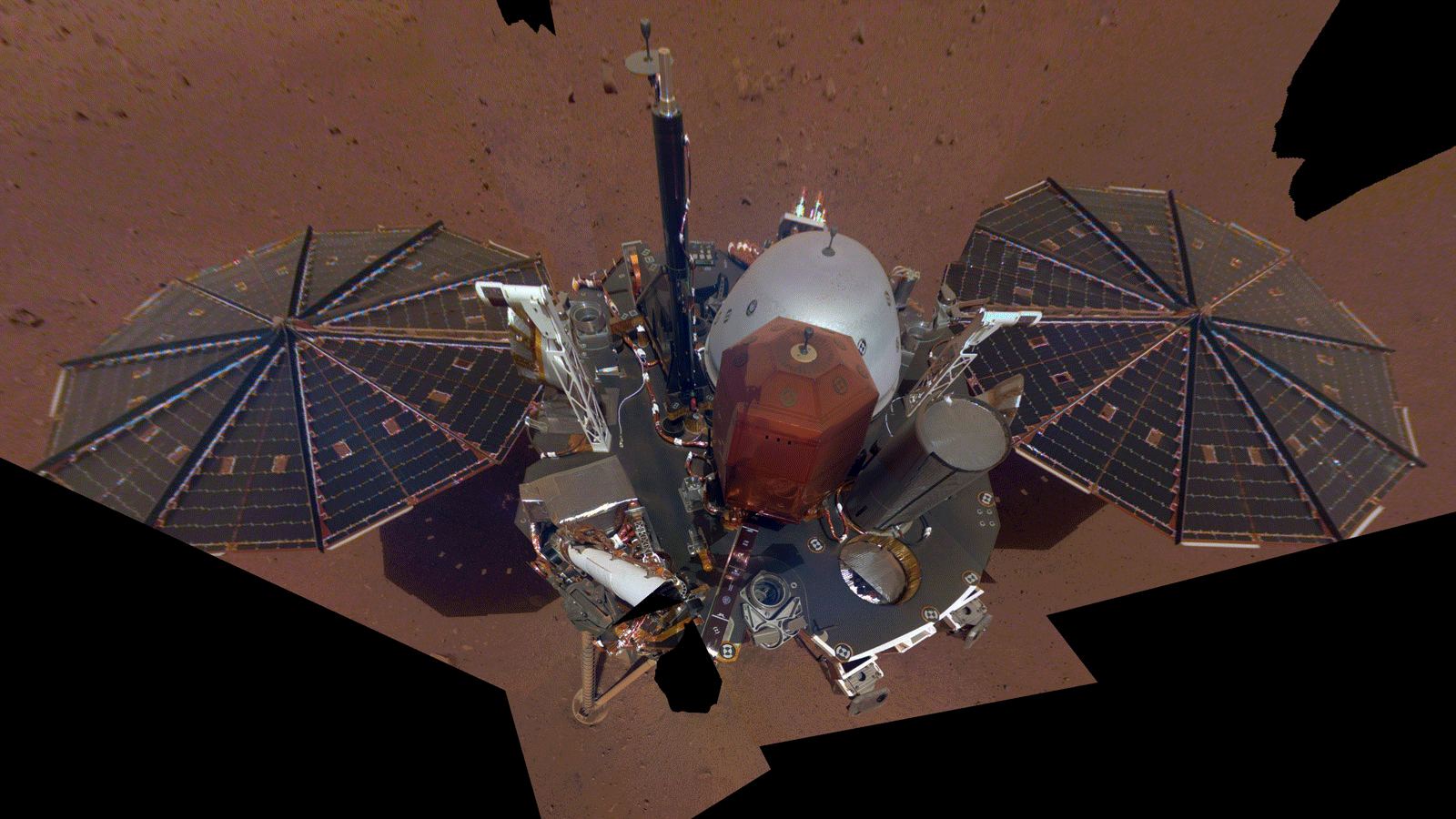All eyes are on Mars this week, and, if we’re being honest, NASA’s InSight lander isn’t the star of the show right now. At the time of writing, we’re anxiously waiting to find out whether or not the Perseverance rover survives its fiery arrival at Mars. But Entry, Descent, and Landing (EDL) is just the first hazard that awaits robotic missions to the red planet. Mars exploration is a marathon, not a sprint, and while Perseverance is just getting started, InSight, which has been on the red planet for two years now, is approaching a tough leg of the race.
InSight’s nemesis: Martian dust. The same cruel villain that killed the Opportunity rover back in 2018.
InSight’s situation isn’t that dire just yet. Currently, the lander’s solar panels are producing about 27% of the power they would create in ideal, dust-free conditions. That’s enough to keep the spacecraft alive, but not enough to function at full capacity. The team at NASA’s Jet Propulsion Laboratory has been putting together a plan to “keep InSight safe through the winter so that we can resume science operations as solar intensity increases,” according to project manager Chuck Scott.
Stage one of the plan involved some good old-fashioned shaking. On Sunday, InSight used the motors which unfurled the solar panels to jostle them in an effort to clear off some dust. The results do not seem to have been significant, but it was worth a try.
Stage two of the plan requires shutting down various instruments periodically in order to maintain essential systems. InSight’s weather station will be one of the first victims of this power-saving regime, taking only infrequent measurements over the coming months. Whether InSight will need to shut down other instruments is largely weather dependant. If a friendly dust devil stops by to blow the solar panels clean, InSight’s troubles will be quickly forgotten. Similar dust devil cleaning events saved the Spirit and Opportunity rovers several times during their missions, and InSight has already observed hundreds of dust devils in its vicinity over the past two years.
On the other hand, windy season just ended, so it might be a while before another dust devil comes close enough. To make matters worse, Mars is approaching aphelion (its furthest point from the Sun) in July, further reducing the sunlight reaching the solar panels. At that time, it is likely that all of InSight’s instruments will have to be powered down temporarily.

The team is confident that they can manage the lander’s power consumption effectively through aphelion, so that it can come out of hibernation and get back to work afterward.
Hopes are still high for more good science from InSight in the years to come. The lander just received a two-year mission extension in January, with the primary goal of “producing a long-duration, high quality seismic dataset.” In addition, a lower priority goal involved making a final attempt at burying InSight’s heat flow probe deeper underground. The probe had been stuck just below the surface for months because the Martian soil offered surprisingly little friction, which the probe needed to push itself down. Those final efforts were undertaken in early January, but with little success, so the digging was abandoned for good on January 14.

Insight’s search for Marsquakes has been more successful. The seismometer’s observations over the next two years may end up being the lander’s most valuable contribution to our understanding of the red planet.
Incidentally, InSight’s seismometer is also going to try to ‘hear’ Perseverance’s landing on Thursday. As Nancy Atkinson wrote last week, “Since the exact timing and location of Perseverance’s arrival is already known, attempting to listen for the rover can be used to calibrate seismic measurements.” So while InSight hunkers down for the winter, it, like us, will be listening carefully for Perseverance to touch down safely.
Learn More:
- Andrew Good, ‘InSight Is Meeting the Challenge of Winter on Dusty Mars.’
- Grey Hautaluoma and Alana Johnson, ‘NASA Extends Exploration for Two Planetary Science Missions.’
- Nancy Atkinson, ‘InSight is Going to Try and “Hear” Perseverance Land on Mars From 3,452 km Away.’

